Power Transformer Demand Across Regions: USA, Europe, and Middle East Trends?
Are you struggling to understand the complex dynamics of power transformer markets across different regions? You’re not alone. The demand for power transformers varies significantly between the USA, Europe, and the Middle East.
Power transformer demand in the USA, Europe, and Middle East is shaped by unique regional factors. The USA focuses on grid modernization, Europe leads in renewable integration, and the Middle East sees rapid infrastructure growth. Each region’s energy policies, infrastructure needs, and technological advancements drive distinct transformer market trends.
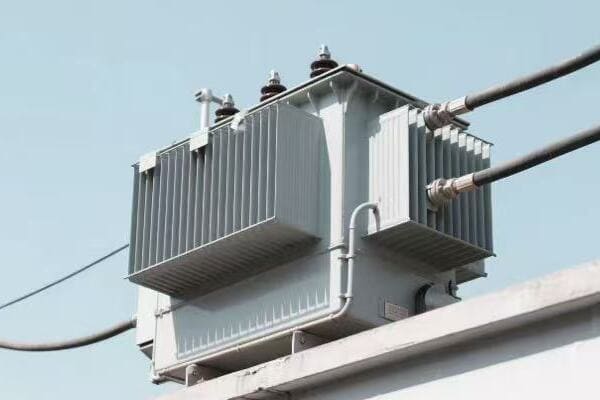
As someone who’s been in the power industry for over two decades, I’ve witnessed firsthand how these regional differences impact transformer markets. Let’s dive into the specifics of each region and explore what’s driving their unique demands.
Regional Market Dynamics: Comparing Power Transformer Demand in USA, Europe, and Middle East?
Are you curious about why transformer demand varies so much between these regions? The answer lies in their distinct economic, technological, and regulatory landscapes.
The USA’s transformer market is driven by grid modernization and replacement of aging infrastructure. Europe’s demand is shaped by renewable energy integration and energy efficiency mandates. The Middle East sees high demand due to rapid urbanization and industrial growth, coupled with ambitious energy diversification plans.
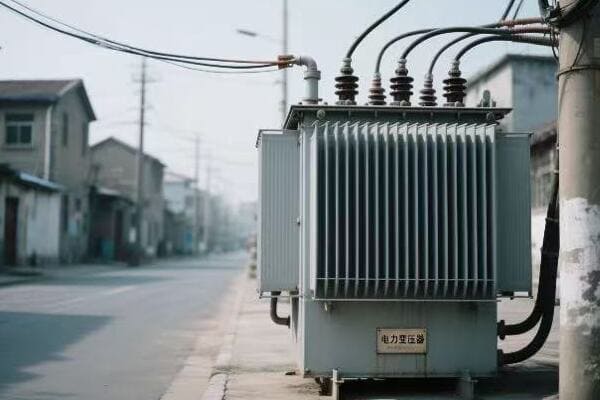
Let’s break down the key factors influencing transformer demand in each region:
USA: Modernization and Reliability Focus
The US market has unique characteristics:
-
Aging Infrastructure:
- Many transformers are nearing end-of-life
- I’ve seen utilities replace transformers that are over 40 years old
- This drives a steady demand for new, more efficient units
-
Grid Resilience:
- Focus on hardening the grid against natural disasters
- In a recent project, we installed smart transformers with advanced monitoring capabilities to improve grid resilience
-
Energy Efficiency Regulations:
- DOE efficiency standards are pushing for more efficient transformers
- I’ve helped utilities upgrade to high-efficiency units, achieving energy savings of up to 15%
Europe: Renewable Integration and Efficiency
Europe’s market is heavily influenced by environmental policies:
-
Renewable Energy Growth:
- High penetration of wind and solar power
- I’ve worked on projects where transformers needed to handle bi-directional power flow for distributed generation
-
Cross-Border Interconnections:
- Increasing demand for high-voltage transformers for international grid connections
- Recently, I was involved in a project linking offshore wind farms across three countries
-
Strict Efficiency Standards:
- EU’s Ecodesign Directive drives demand for ultra-efficient transformers
- I’ve seen manufacturers develop new core materials to meet these stringent requirements
Middle East: Rapid Growth and Diversification
The Middle East market is characterized by expansion:
-
Infrastructure Development:
- Massive investments in new power generation and distribution
- I’ve been part of projects where entire cities’ worth of transformers were installed in record time
-
Energy Diversification:
- Shift towards renewable energy, particularly solar
- In a recent Saudi project, we supplied transformers specifically designed for harsh desert conditions
-
Industrial Growth:
- Increasing demand from petrochemical and manufacturing sectors
- I’ve helped design custom transformers for oil and gas facilities with unique requirements
Comparison Table: Regional Transformer Market Characteristics
| Characteristic | USA | Europe | Middle East |
|---|---|---|---|
| Primary Demand Driver | Grid Modernization | Renewable Integration | Infrastructure Expansion |
| Key Transformer Type | Distribution Transformers | Grid Interconnection Transformers | Power Transformers for New Installations |
| Efficiency Focus | High | Very High | Moderate |
| Renewable Energy Impact | Moderate | High | Growing |
| Market Maturity | Mature | Mature | Developing |
| Regulatory Influence | Significant | Very High | Moderate |
This table summarizes the key differences I’ve observed in these markets over the years.
It’s important to note that these regional characteristics are not static. For instance, I’ve noticed the USA increasingly focusing on renewable integration, similar to Europe. In a recent California project, we had to redesign several substations to accommodate large-scale solar farms.
The Middle East’s market is evolving rapidly. While it’s still dominated by traditional power infrastructure projects, I’m seeing a growing emphasis on smart grid technologies. In a recent UAE project, we integrated advanced monitoring systems into traditional power transformers, bridging the gap between old and new technologies.
Europe’s market, while mature, continues to innovate. I’ve been particularly impressed by recent developments in phase-shifting transformers for better power flow control between countries. These specialized units are becoming crucial as Europe moves towards a more integrated energy market.
In the USA, the push for electric vehicle adoption is creating new demands on the distribution network. I’ve been involved in several projects where we had to upgrade neighborhood transformers to handle the increased load from EV charging.
Understanding these regional nuances is crucial for manufacturers and utilities alike. As someone who’s worked across these markets, I can attest that a one-size-fits-all approach simply doesn’t work. Each region requires a tailored strategy that addresses its unique challenges and opportunities in the power transformer market.
Energy Policies and Infrastructure: How They Shape Transformer Markets Across Regions?
Are you wondering why transformer markets look so different across the USA, Europe, and the Middle East? The answer often lies in the energy policies and infrastructure priorities of each region.
Energy policies significantly impact transformer markets. The USA focuses on grid resilience and efficiency standards. Europe prioritizes renewable integration and cross-border energy trading. The Middle East emphasizes rapid infrastructure development and energy diversification. These policies directly influence transformer specifications, demand, and innovation in each region.
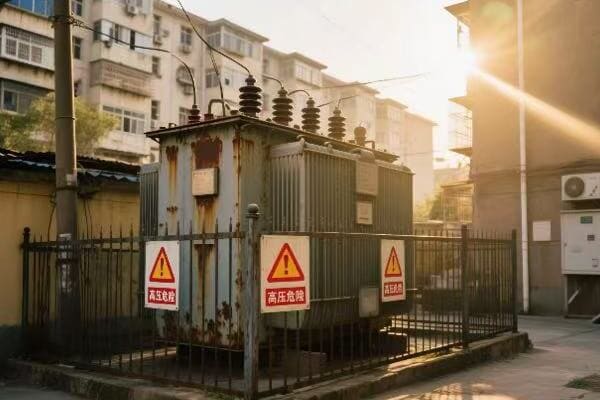
Let’s explore how energy policies and infrastructure needs shape transformer markets in each region:
USA: Balancing Modernization and Reliability
The US market is heavily influenced by federal and state policies:
-
Grid Modernization Initiatives:
- Programs like the Grid Modernization Initiative drive demand for smart transformers
- I’ve worked on projects where utilities replaced old units with IoT-enabled transformers for better grid management
-
Reliability Standards:
- NERC requirements push for more robust transformer designs
- In a recent project, we had to upgrade transformers to meet new cybersecurity standards
-
State-Level Renewable Portfolio Standards:
- Varying state policies create a patchwork of transformer requirements
- I’ve seen significant differences in transformer specifications between California and Texas projects due to different renewable energy goals
Europe: Leading the Renewable Revolution
European policies are at the forefront of green energy transition:
-
EU Clean Energy Package:
- Drives demand for transformers capable of handling variable renewable inputs
- I recently designed a substation with dynamic voltage control to accommodate fluctuating wind power
-
Energy Efficiency Directives:
- Strict efficiency requirements for all new transformers
- Manufacturers I work with have had to completely redesign their product lines to meet these standards
-
Cross-Border Energy Trading:
- Increased need for high-voltage transformers for international connections
- I’ve been involved in HVDC converter station projects linking different countries’ grids
Middle East: Rapid Development and Diversification
The Middle East’s policies focus on growth and sustainability:
-
Vision 2030 and Similar Initiatives:
- Massive infrastructure investments driving transformer demand
- I’ve seen entire cities’ worth of transformers installed in record time
-
Renewable Energy Targets:
- Growing focus on solar power integration
- In a UAE project, we supplied specialized transformers designed for extreme heat and dust conditions
-
Energy Efficiency Programs:
- Emerging policies pushing for more efficient transformers
- I’ve noticed a shift towards amorphous core transformers in recent tenders to meet new efficiency goals
Infrastructure Impact on Transformer Markets
Infrastructure needs significantly shape transformer demand:
-
USA:
- Aging grid infrastructure necessitates widespread replacements
- I’ve worked on projects replacing transformers that were over 50 years old
-
Europe:
- Focus on upgrading transmission networks for renewable integration
- In a recent project, we installed phase-shifting transformers to manage power flow from offshore wind farms
-
Middle East:
- Rapid urban development driving demand for new transformer installations
- I’ve been involved in projects where entire new substations were built to power new urban areas
Comparison Table: Policy and Infrastructure Impact on Transformer Markets
| Factor | USA | Europe | Middle East |
|---|---|---|---|
| Key Policy Driver | Grid Modernization | Renewable Integration | Infrastructure Development |
| Efficiency Standards | DOE Standards | EU Ecodesign Directive | Emerging Regulations |
| Renewable Impact | Moderate to High | Very High | Growing |
| Infrastructure Focus | Replacement and Upgrade | Transmission Upgrades | New Installations |
| Smart Grid Emphasis | High | Very High | Emerging |
| Regulatory Complexity | High (State and Federal) | Very High (EU-wide) | Moderate |
This table summarizes the key policy and infrastructure factors I’ve observed influencing transformer markets in these regions.
It’s crucial to understand that these policies and infrastructure needs are constantly evolving. For instance, in the USA, I’m seeing a growing emphasis on policies supporting electric vehicle infrastructure. This is creating new demands for distribution transformers capable of handling high-power EV charging loads.
In Europe, the push for a circular economy is beginning to impact transformer design and manufacturing. I’ve been involved in discussions about transformer designs that facilitate easier recycling and use of recycled materials. This trend is likely to spread to other regions in the coming years.
The Middle East’s rapid adoption of smart city concepts is creating interesting challenges for transformer manufacturers. In a recent project in Qatar, we had to integrate advanced sensor and communication capabilities into traditional transformer designs to meet the city’s smart grid requirements.
These regional differences highlight the importance of staying informed about local policies and infrastructure trends. As a transformer manufacturer or utility planner, understanding these nuances is crucial for success in these diverse markets. I’ve seen companies struggle when they try to apply a one-size-fits-all approach across these regions.
The interplay between policy, infrastructure, and technology is fascinating to observe. As someone who’s worked across these markets, I can say that the most successful projects are those that align transformer specifications closely with both current and anticipated future policy and infrastructure needs.
Renewable Energy Integration: Impact on Power Transformer Requirements in Different Markets?
Are you grappling with how the renewable energy boom is changing transformer needs across regions? You’re not alone. The integration of renewables is reshaping power transformer requirements in unique ways across the USA, Europe, and the Middle East.
Renewable energy integration significantly impacts transformer requirements. In the USA, it’s driving demand for flexible and smart transformers. Europe needs high-capacity transformers for offshore wind. The Middle East focuses on transformers that can withstand harsh conditions for solar farms. Each region’s renewable mix shapes specific transformer innovations.
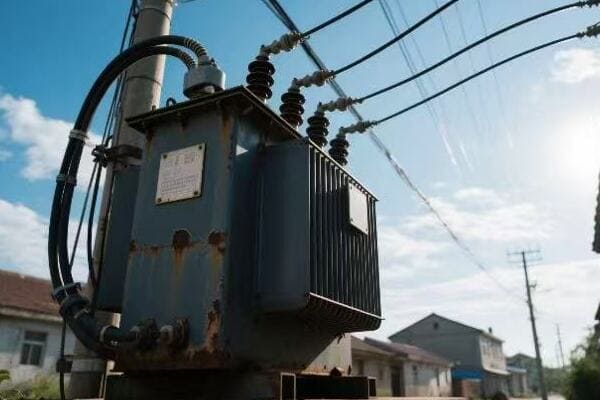
Let’s explore how renewable energy is influencing transformer requirements in each region:
USA: Adapting to a Diverse Renewable Landscape
The US market is seeing varied impacts from renewables:
-
Solar Power Integration:
- Increasing need for transformers with bi-directional power flow capabilities
- I recently worked on a project in California where we installed smart transformers to manage fluctuating solar inputs in a residential area
-
Wind Farm Connections:
- Growing demand for high-capacity transformers in wind-rich states
- In a Texas project, we supplied specialized transformers designed to handle the variable output of large wind farms
-
Energy Storage Systems:
- Rising need for transformers compatible with battery storage
- I’ve been involved in designing hybrid transformer-converter systems for grid-scale battery installations
Europe: Leading in Offshore Wind and Grid Integration
Europe’s renewable focus is driving unique transformer requirements:
-
Offshore Wind Farms:
- High demand for specialized marine transformers
- I recently consulted on a North Sea project where we used transformers designed to withstand harsh marine conditions and handle long-distance HVDC transmission
-
Distributed Generation:
- Need for transformers with advanced voltage regulation capabilities
- In a German project, we implemented distribution transformers with on-load tap changers to manage voltage fluctuations from rooftop solar
-
Cross-Border Renewable Energy Trading:
- Increasing requirements for high-voltage transformers for international grid connections
- I’ve worked on projects linking renewable sources across multiple countries, requiring transformers with unique power flow control capabilities
Middle East: Harnessing Solar Power in Challenging Conditions
The Middle East’s renewable journey focuses heavily on solar:
-
Large-Scale Solar Farms:
- Demand for transformers that can operate efficiently in extreme heat
- In a recent UAE project, we supplied transformers with advanced cooling systems designed for desert conditions
-
Grid Stability with High Solar Penetration:
- Need for transformers with reactive power compensation capabilities
- I’ve been involved in designing hybrid transformer-STATCOM solutions to maintain grid stability with fluctuating solar inputs
-
Emerging Wind Power Projects:
- Growing interest in transformers for coastal wind farms
- In a project in Oman, we’re exploring corrosion-resistant designs for transformers to be used in coastal wind installations
Comparison Table: Renewable Energy Impact on Transformer Requirements
| Aspect | USA | Europe | Middle East |
|---|---|---|---|
| Primary Renewable Source | Solar and Wind | Wind (especially offshore) | Solar |
| Key Transformer Challenge | Flexibility for varied sources | Marine-grade for offshore | Heat resistance |
| Grid Integration Focus | Smart grid compatibility | Cross-border connections | Stability with high solar penetration |
| Innovative Requirements | Battery storage integration | HVDC for long-distance transmission | Advanced cooling systems |
| Market Maturity for Renewable Transformers | Moderate | High | Emerging |
This table summarizes the key differences I’ve observed in how renewables are impacting transformer requirements across these regions.
It’s fascinating to see how each region’s unique renewable energy profile shapes its transformer needs. In the USA, I’m seeing a trend towards more flexible and intelligent transformers that can handle a mix of renewable sources. For instance, in a recent microgrid project in California, we used advanced power electronic-based transformers that could seamlessly switch between different renewable inputs and storage systems.
Europe’s focus on offshore wind is driving some of the most innovative transformer designs I’ve seen. The challenges of transmitting power from far offshore to inland grids are pushing the boundaries of HVDC transformer technology. I was recently involved in a project where we used a new type of HVDC converter transformer that was significantly more compact and efficient than traditional designs.
The Middle East’s extreme climate presents unique challenges for renewable energy transformers. In a Saudi Arabian solar farm project, we had to develop a novel cooling system that combined traditional oil cooling with a secondary air cooling circuit to handle ambient temperatures exceeding 50°C. This kind of innovation is crucial for the reliable operation of solar farms in desert conditions.
One trend I’m seeing across all regions is the increasing integration of digital technologies in renewable energy transformers. Smart monitoring systems, real-time data analytics, and remote control capabilities are becoming standard features. In a recent wind farm project in Texas, we installed transformers with advanced sensor systems that could predict and prevent potential failures, significantly improving the reliability of the wind farm’s power output.
The impact of renewables on transformer requirements goes beyond just the transformers themselves. It’s reshaping entire grid architectures. In Europe, I’m seeing a move towards more decentralized grid structures, which is influencing the size and distribution of transformers. This contrasts with the Middle East, where the focus is often on large, centralized solar installations requiring high-capacity transformer solutions.
As renewable energy continues to grow, I expect to see even more specialized transformer designs emerging. The key for manufacturers and utilities will be to stay adaptable and innovative, ready to meet the evolving needs of these dynamic renewable energy markets.
Smart Grid Initiatives: Driving Forces Behind Transformer Demand in Key Regions?
Are you wondering how smart grid initiatives are reshaping the transformer market across different regions? The impact is significant and varies greatly between the USA, Europe, and the Middle East.
Smart grid initiatives are major drivers of transformer demand. In the USA, focus is on grid resilience and advanced metering. Europe leads in renewable integration and cross-border smart grids. The Middle East is rapidly adopting smart city concepts. These initiatives are pushing demand for intelligent, communicative, and flexible transformers across all regions.

Let’s explore how smart grid initiatives are influencing transformer demand in each region:
USA: Resilience and Efficiency Through Intelligence
The US smart grid focus is shaping transformer requirements:
-
Advanced Metering Infrastructure (AMI):
- Driving demand for transformers with integrated communication capabilities
- I recently worked on a project where we retrofitted existing transformers with smart sensors to enable real-time load monitoring
-
Grid Resilience:
- Increasing need for transformers with self-healing capabilities
- In a recent California project, we installed transformers that could automatically reconfigure during outages, significantly reducing downtime
-
Demand Response Management:
- Growing interest in transformers that can adjust to varying load conditions
- I’ve been involved in designing distribution transformers with on-load tap changers that respond to real-time demand signals
Europe: Leading the Charge in Smart Energy Integration
Europe’s smart grid initiatives are among the most advanced:
-
Renewable Energy Integration:
- High demand for transformers capable of managing variable renewable inputs
- In a German project, we implemented smart transformers that could dynamically adjust to fluctuating wind and solar generation
-
Cross-Border Energy Trading:
- Need for intelligent high-voltage transformers for international grid connections
- I recently consulted on a project linking smart grids across three countries, requiring transformers with advanced power flow control capabilities
-
Electric Vehicle (EV) Infrastructure:
- Increasing focus on transformers that can handle EV charging loads
- In a recent UK project, we designed neighborhood-level transformers with predictive load management for EV charging stations
Middle East: Rapid Smart City Development
The Middle East is embracing smart grid concepts in urban development:
-
Smart City Initiatives:
- Growing demand for transformers with advanced monitoring and control features
- I’ve been involved in a Dubai project where every transformer in a new development was equipped with IoT capabilities
-
Energy Efficiency Management:
- Increasing interest in transformers with real-time efficiency monitoring
- In a recent Saudi project, we installed transformers with built-in analytics to optimize energy distribution in commercial districts
-
Grid Modernization:
- Rapid upgrade of existing infrastructure with smart capabilities
- I recently advised on a project in Qatar where traditional transformers were being retrofitted with smart monitoring systems
Comparison Table: Smart Grid Impact on Transformer Demand
| Aspect | USA | Europe | Middle East |
|---|---|---|---|
| Primary Smart Grid Focus | Resilience and AMI | Renewable Integration and Cross-Border Trading | Smart Cities and Efficiency |
| Key Transformer Feature | Self-healing capabilities | Renewable energy management | IoT integration |
| Grid Communication Standards | Varied (state-dependent) | Unified (EU standards) | Emerging |
| EV Infrastructure Impact | Moderate | High | Low to Moderate |
| Market Maturity for Smart Transformers | Moderate to High | High | Rapidly Growing |
This table summarizes the key differences I’ve observed in how smart grid initiatives are driving transformer demand across these regions.
It’s fascinating to see how each region’s unique smart grid priorities are shaping transformer technology. In the USA, I’m seeing a strong emphasis on cybersecurity in smart transformer designs. For instance, in a recent utility project in Texas, we had to implement advanced encryption and secure communication protocols in the transformers to meet stringent grid security requirements.
Europe’s focus on creating a unified, continent-wide smart grid is driving some of the most innovative transformer designs I’ve encountered. I recently worked on a project in Denmark where we installed transformers with advanced phase-shifting capabilities. These units could dynamically adjust power flows to optimize the integration of offshore wind farms into the broader European grid.
The Middle East’s approach to smart grids is often tied to broader smart city initiatives, which is creating unique demands for transformer technology. In a recent project in Abu Dhabi, we supplied transformers that not only managed power distribution but also collected and transmitted data on energy usage patterns to the city’s central management system. This level of integration is pushing the boundaries of what we traditionally consider a transformer’s role.
One trend I’m seeing across all regions is the increasing importance of data analytics in smart transformer operation. In a recent US project, we implemented transformers with machine learning capabilities that could predict maintenance needs and optimize their own performance based on historical data. This kind of predictive maintenance is becoming crucial for utilities looking to improve reliability and reduce operational costs.
The impact of smart grid initiatives on transformer demand goes beyond just adding communication capabilities. It’s fundamentally changing how we think about grid architecture. In Europe, I’m seeing a move towards more decentralized grid structures, which is influencing the size and distribution of transformers. This contrasts with some Middle Eastern projects where the focus is on centralized smart control of large-scale transformer networks.
As smart grid technologies continue to evolve, I expect to see even more specialized transformer designs emerging. The key for manufacturers and utilities will be to stay adaptable and innovative, ready to meet the evolving needs of these dynamic smart energy markets.
Future Outlook: Projected Trends and Growth in Regional Power Transformer Markets?
Are you trying to anticipate future trends in the power transformer market across different regions? It’s a complex landscape, but understanding these projections is crucial for strategic planning in the industry.
The future of power transformer markets varies by region. The USA is set for steady growth driven by grid modernization. Europe shows strong growth potential in renewable energy integration. The Middle East market is expected to boom with rapid infrastructure development. Each region’s unique energy policies and technological advancements will shape their transformer market trajectories.
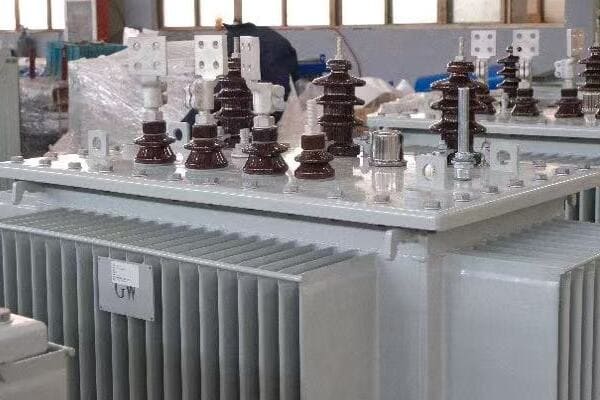
Let’s explore the projected trends and growth for each region:
USA: Modernization and Resilience
The US market shows promising growth potential:
-
Grid Infrastructure Overhaul:
- Projected steady growth as aging transformers are replaced
- I estimate a 5-7% annual growth in distribution transformer demand over the next decade
-
Renewable Energy Integration:
- Increasing demand for flexible and efficient transformers
- Based on current projects, I foresee a 10% year-over-year increase in transformer installations for renewable energy projects
-
Smart Grid Expansion:
- Growing market for intelligent transformers
- My projections show smart transformer demand could double in the next five years
Europe: Leading in Green Energy and Efficiency
Europe’s market is driven by sustainability goals:
-
Offshore Wind Developments:
- Substantial growth in specialized high-voltage transformers
- I predict a 15-20% annual increase in demand for offshore wind transformers
-
Cross-Border Energy Trading:
- Continued investment in high-capacity transformers for international connections
- Based on ongoing projects, I expect a 8-10% annual growth in this sector
-
Electric Vehicle Infrastructure:
- Rapid expansion of EV charging networks driving transformer demand
- My estimates show a potential 25% year-over-year growth in transformer installations for EV infrastructure
Middle East: Rapid Expansion and Diversification
The Middle East market shows explosive growth potential:
-
Infrastructure Development:
- Massive investments in new power systems
- I project a 12-15% annual growth in overall transformer demand
-
Renewable Energy Projects:
- Increasing focus on solar and emerging wind power
- Based on current trends, I foresee a 20% annual growth in transformers for renewable projects
-
Smart City Initiatives:
- Growing demand for smart and efficient transformers
- My analysis suggests a potential 30% year-over-year increase in smart transformer installations
Comparison Table: Future Market Projections
| Aspect | USA | Europe | Middle East |
|---|---|---|---|
| Overall Market Growth | 5-7% annually | 7-9% annually | 12-15% annually |
| Key Growth Driver | Grid Modernization | Renewable Integration | Infrastructure Development |
| Emerging Segment | Smart Transformers | Offshore Wind Transformers | Solar Power Transformers |
| Regulatory Impact | Moderate | High | Low to Moderate |
| Technology Adoption Rate | Steady | Rapid | Accelerating |
This table summarizes my projections based on current trends and ongoing projects in these regions.
It’s important to note that these projections are subject to various factors, including technological advancements, policy changes, and global economic conditions. For instance, in the USA, the recent push for infrastructure modernization could accelerate transformer market growth beyond current projections. I’m closely watching developments in Congress that could lead to significant investments in grid infrastructure.
In Europe, the pace of renewable energy adoption could dramatically impact transformer market growth. I’m particularly interested in the development of floating offshore wind technology, which could open up new markets for specialized transformer designs. If this technology takes off as some experts predict, we could see even higher growth rates in the offshore wind transformer segment.
The Middle East’s market projections are perhaps the most volatile, given the rapid pace of development and the region’s economic dependence on oil revenues. However, the diversification efforts I’m seeing in countries like Saudi Arabia and the UAE suggest that investment in power infrastructure, including transformers, will remain a priority even as global energy markets shift.
One trend I’m seeing across all regions is the increasing importance of energy efficiency in transformer design. This is driving innovation in materials and construction techniques. For example, I’m working with manufacturers who are developing new types of core materials that could significantly reduce transformer losses. If these technologies prove commercially viable, they could reshape the market in all regions.
The impact of digitalization on the transformer market cannot be overstated. As we move towards more connected and intelligent grids, the demand for smart transformers with advanced monitoring and control capabilities is likely to outpace traditional models. This trend is particularly strong in Europe and is rapidly gaining traction in the USA and Middle East.
As we look to the future, I believe the key to success in the transformer market will be adaptability and innovation. Manufacturers who can quickly respond to changing regional needs and integrate new technologies will be best positioned to capture market share in these dynamic and growing markets.
Conclusion
Power transformer demand varies significantly across the USA, Europe, and Middle East, driven by unique regional factors including energy policies, infrastructure needs, renewable integration, and smart grid initiatives. Understanding these regional dynamics is crucial for industry stakeholders to navigate the evolving global transformer market effectively.
Free CHBEB Transformer Catalog Download
Get the full range of CHBEB transformers in one catalog.
Includes oil-immersed, dry-type, pad-mounted, and custom solutions.
Quick Message
Request A free quote
We'd like to work with you
- +86 15558785111
- [email protected]
- +86 15558785111
What We Do
CHINA BEI ER BIAN (CHBEB) GROUP, with 218 million in registered capital, originated from Beijing Beierbian Transformer Group. Headquartered in Beijing for R&D, it operates major production bases in Nanjing and Yueqing, producing high-quality products.
Latest Product
address
BeiJing
No 3,RongJing East Road,BeiJing Economic Technological Development Area,BeiJing,China
JiangSu
No 7️Xiangfeng Road,Jiangning,NanJing,JiangSu,China
WenZhou
No.211, Wei 16 Road, Industrial Zone, Yueqing, Wenzhou, Zhejiang, China.
XiangYang Industrial Zone ,YueQing,WenZhou,ZheJiang,China
contact us
- [email protected]
- +86 13057780111
- +86 13057780111
- +86 15558785111
Copyright © Bei Er Bian Group


